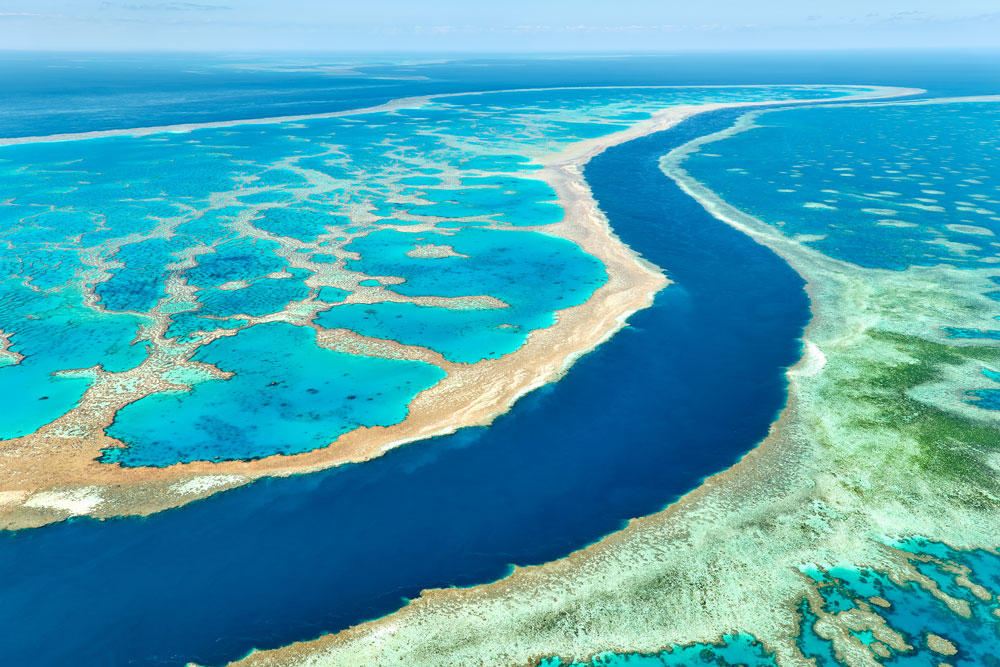
Exploring the Australian Majesty: Ribbon Reef Liveaboard Diving
A liveaboard trip to the Ribbon Reefs allows divers to immerse themselves completely in the beauty of the Great Barrier Reef . Away from the crowds, liveaboards provide access to more remote dive sites that day boats rarely visit, with the luxury of multiple dives per day at different sites.
Ribbon Reef liveaboard offers an unmatched diving holiday, with professional crews that understand the local waters, maximizing the opportunity to witness the reefs at their most active times, including dawn and night dives.
About Ribbon Reef Liveaboard Diving
Ribbon Reefs are a hotspot for biodiversity. Divers can expect to see an array of hard and soft corals, giant clams, anemones with resident clownfish, and countless species of tropical fish.
A Ribbon Reef liveaboard trip is a must-do for any serious diver. It's a chance to explore the legendary biodiversity of the Great Barrier Reef, experience close encounters with marine life, and create memories that will last a lifetime. The Ribbon Reefs are not just a diving destination; they're an underwater journey through one of nature's most impressive creations.
Ribbon Reef Dive Sites
Cod Hole: is known worldwide for its friendly and gigantic potato cod, which are accustomed to interacting with divers.
Steve's Bommie: a pinnacle teeming with fish life, is a photographer's dream, attracting everything from tiny nudibranchs to large pelagics.
Lighthouse Bommie: is famous for minke whale encounters during the winter months.
Pixie Pinnacle and Vertical Gardens: are adorned with spectacular coral formations that will enchant divers with their colors and diversity.
Marine Life Encounters
The Ribbon Reefs, a part of the Great Barrier Reef, offer divers an underwater cavalcade of marine biodiversity and some of the most visually stunning dive sites in the world.
The reefs are adorned with a vast array of both hard and soft corals. Divers can swim over and around large bommies (coral towers) and through intricate coral gardens. The health and diversity of these coral structures provide habitats for countless marine species.
One of the Ribbon Reefs' biggest draws is the regular encounters with large marine creatures. Perhaps the most famous are the potato cod at Cod Hole, which can grow up to 2 meters in length and are known for their docile nature around divers. At certain times of the year, especially from June to July, the inquisitive dwarf minke whales visit, and some liveaboards offer the chance to snorkel or dive with these gentle giants.
Schools of trevally, barracuda, and other pelagics are commonly sighted along the current-swept edges of the reefs. Their silver bodies shimmer as they ride the nutrient-rich waters.
Reef sharks, including white-tip and black-tip sharks, are a common sight and provide an adrenaline rush for many divers. These predators are essential to the health of the marine ecosystem and are incredible to observe in their natural habitat.
For the lucky few, there might be encounters with more elusive species such as leafy scorpionfish, seahorses, and even the rare ornate ghost pipefish.
The Ribbon Reefs offer a dynamic underwater environment that is constantly changing with the seasons and currents. Divers who visit these reefs are treated to a showcase of the ocean's splendor, with each dive site along the Ribbon Reefs offering its own unique display of marine life.
Diving Conditions and Best Time to Visit
The water temperature ranges from 24°C (75°F) in the winter to 30°C (86°F) in the summer, allowing for comfortable diving all year round. Visibility can extend beyond 30 meters, making every dive an extraordinary visual event. The best time to visit the Ribbon Reefs for liveaboard diving is from June to November when the weather is stable and marine life, including dwarf minke whales, is abundant.
Experience Required
While divers of all levels can enjoy the Ribbon Reefs, some sites are more suited to advanced divers due to strong currents and deeper depths. Liveaboards often offer courses that allow less experienced divers to advance their skills while enjoying these magnificent reefs.
Arriving at Ribbon Reef
To start your Ribbon Reef liveaboard adventure, you will typically fly into Cairns, which is well-served by domestic and international flights. From there, liveaboards depart from Cairns or Port Douglas, with itineraries ranging from a few days to a week or more.
We're Here to Help 24/7






